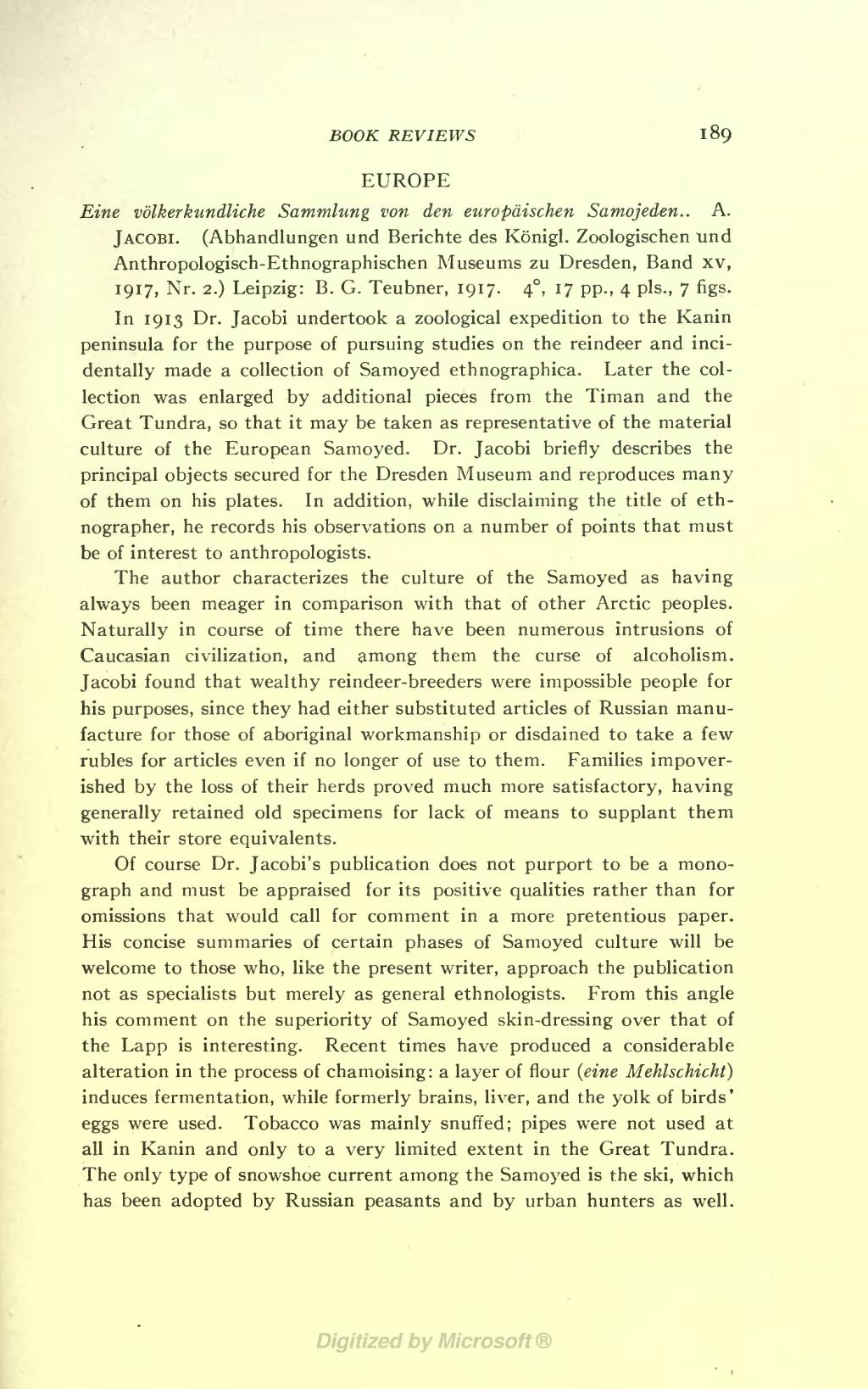BOOK REVIEWS 189
EUROPE
Eine volkerkundliche Sammlung von den europdischen Samojeden.. A. JACOBI. (Abhandlungen und Berichte des Konigl. Zoologischen und Anthropologisch-Ethnographischen Museums zu Dresden, Band xv, 1917, Nr. 2.) Leipzig: B. G. Teubner, 1917. 4, 17 pp., 4 pis., 7 figs. In 1913 Dr. Jacobi undertook a zoological expedition to the Kanin peninsula for the purpose of pursuing studies on the reindeer and inci- dentally made a collection of Samoyed ethnographica. Later the col- lection was enlarged by additional pieces from the Timan and the Great Tundra, so that it may be taken as representative of the material culture of the European Samoyed. Dr. Jacobi briefly describes the principal objects secured for the Dresden Museum and reproduces many of them on his plates. In addition, while disclaiming the title of eth- nographer, he records his observations on a number of points that must be of interest to anthropologists.
The author characterizes the culture of the Samoyed as having always been meager in comparison with that of other Arctic peoples. Naturally in course of time there have been numerous intrusions of Caucasian civilization, and among them the curse of alcoholism. Jacobi found that wealthy reindeer-breeders were impossible people for his purposes, since they had either substituted articles of Russian manu- facture for those of aboriginal workmanship or disdained to take a few rubles for articles even if no longer of use to them. Families impover- ished by the loss of their herds proved much more satisfactory, having generally retained old specimens for lack of means to supplant them with their store equivalents.
Of course Dr. Jacobi's publication does not purport to be a mono- graph and must be appraised for its positive qualities rather than for omissions that would call for comment in a more pretentious paper. His concise summaries of certain phases of Samoyed culture will be welcome to those who, like the present writer, approach the publication not as specialists but merely as general ethnologists. From this angle his comment on the superiority of Samoyed skin-dressing over that of the Lapp is interesting. Recent times have produced a considerable alteration in the process of chamoising: a layer of flour (eine Mehlschicht] induces fermentation, while formerly brains, liver, and the yolk of birds' eggs were used. Tobacco was mainly snuffed; pipes were not used at all in Kanin and only to a very limited extent in the Great Tundra. The only type of snowshoe current among the Samoyed is the ski, which has been adopted by Russian peasants and by urban hunters as well.
�� �
